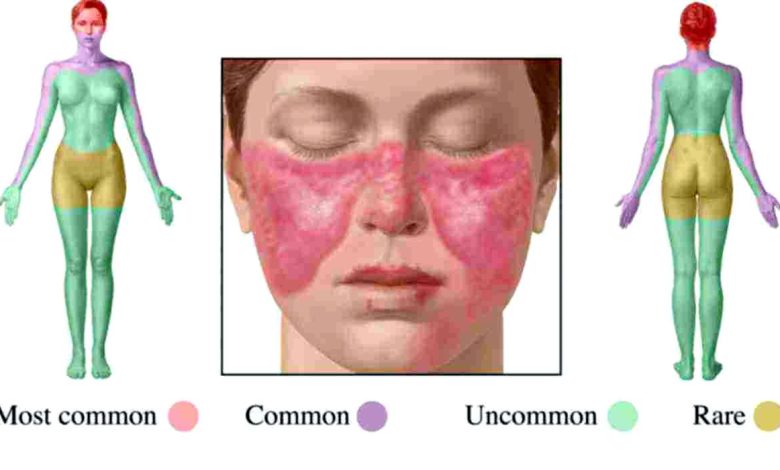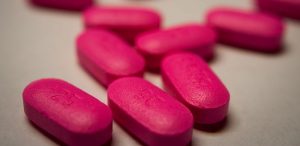Lyell's syndrome or toxic epidermal necrolysis – what is this, symptoms, diagnostics, treatment, prevention

Toxic Epidermal Necrolysis – What is this disease?
Lyell Syndrome (sharp or toxic Epidermal Necrolysis) -heavy polyetiological allergic disease nature, characterized by sharp violation of the general condition of the patient, bulleznym defeat the entire integument and mucous.
Toxic Epidermal Necrolysis: the cause of the
Depending on the cause of the syndrome Laiella modern Dermatology highlights 4 variants of the disease. The first is an allergic reaction to the infection process and often attributed to Golden staph II Group. Usually, It occurs in children and is characterized by the most severe.
Second — Lyell Syndrome, that has occurred in connection with the use of drugs (sulfonamides, antibiotics, antiseizure medications, acetylsalicylic acid, pain relievers, anti-inflammatory and anti-TB means). Most often, the syndrome is caused by the simultaneous intake of several drugs, one of whom was the sulfanilamide. In recent years, cases of the syndrome of Lyell on the use of dietary supplements, vitamins, contrast substances for carrying out radiography etc.
The third variant syndrome Laiella make up ideopaticheskie cases, the cause of which remains unknown. Fourth – Lyell's syndrome, caused by combined causes: infectious and medicinal, developing on therapy of infectious disease.
Symptoms of toxic epidermal nekroliza
The disease appears from 10 h to 20 days after taking medication raised it. It starts suddenly, thriving and rapidly progressing. Temperature up to 38-40 ° C, raises chills, malaise, headache and pain in the abdomen. Shortly thereafter, – nausea, vomiting, diarrhea. On different areas of the skin, most often on the face – around the mouth, eye, nose, the genitals, as well as on the trunk and limbs – in the field, subject to friction and pressure, merging occur between a otjochnye erythematous patches. Blisters may appear simultaneously, papules, petechiae, bruising. Quickly and silently on the surface stains are formed by large, reaching the size of the Palm of the bubbles with transparent or haemorrhagic content, with the thin flabby tyre.
Toxic Epidermal Necrolysis: diagnostics
Clinical blood Lyell Syndrome indicates inflammatory process. There has been an increased ESR, Leukocytosis with the advent of immature forms. The reduction or complete absence of eosinophils in the blood analysis is a diagnostic sign, allowing to distinguish laiella syndrome from other allergic conditions. Coagulogram data indicate high blood coagulability. Urinalysis and biochemical blood analysis can identify violations, originating from the kidneys, and to monitor the status of the body in the healing process.
An important task is the identification of medication, that led to the development of the Lyell Syndrome, because its re-use in the treatment process can be fatal for the patient. Identify provoking substance helps the holding of immunological tests. On provoking the drug indicates the rapid reproduction of immune cells, raised in response to his introduction in patient blood sample.
Biopsy and histological examination of skin sample patient Lyell Syndrome detects total loss of cells of the surface layer of the epidermis. In the deeper layers of the observed formation of large bubbles, swelling and accumulation of immune cells with the greatest concentration in the skin vessels.
Lyell Syndrome differentiate with other acute Dermatitis, coupled with blistering: aktinicheskim Dermatitis, puzyrchatkoj, Contact Dermatitis, Stevens-Johnson Syndrome, bulleznym jepidermolizom, gerpetiforman dermatitis Duringa, simple Herpes.
Toxic Epidermal Necrolysis: classification
Allocate 3 option flow Lyell Syndrome: Lightning fatality, spicy, with possible fatal consequences when joining infectious process and beneficial, usually resolves after 7-10 days.
Toxic Epidermal Necrolysis: patient actions
Earlier initiation of treatment and careful holding of improve the prognosis of the disease.
Treatment of toxic epidermal nekroliza
Lyell Syndrome treatment applied medication, supporting the health of the kidneys and liver; enzyme inhibitors, participating in the destruction of tissues; mineral substances (potassium, calcium and magnesium); preparations, reduced coagulation; diuretics; broad spectrum antibiotics.
Local treatment of Lyell Syndrome includes use of aerosols with corticosteroids, wet-drying turban, antibacterial lotions. It shall be conducted in accordance with the principles of handling Burns. To prevent infection syndrome Laiella needed several times a day to carry out change of underwear on sterile, to process not only skin, but the mucous. In view of the concern expressed by the soreness, local therapy should be carried out with appropriate analgesia. If necessary, the holding of the taping is done under anesthesia.
Toxic Epidermal Necrolysis: complications
The plight during TEH at 30-50% patients can lead to death through 5-30 days from the onset of the disease. When remission possible recurrence.
Prevention of toxic epidermal nekroliza
It is necessary to avoid the application of medicinal «cocktails».

